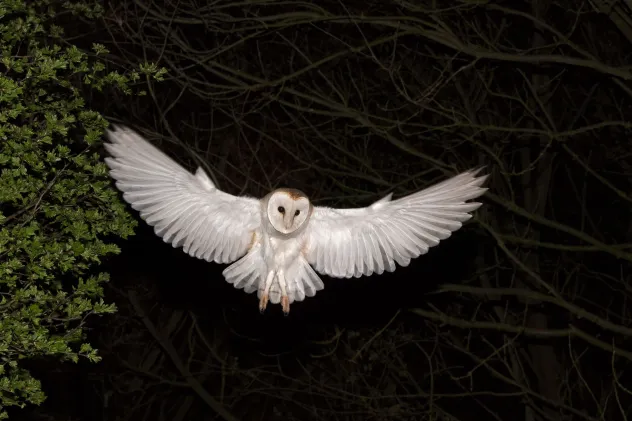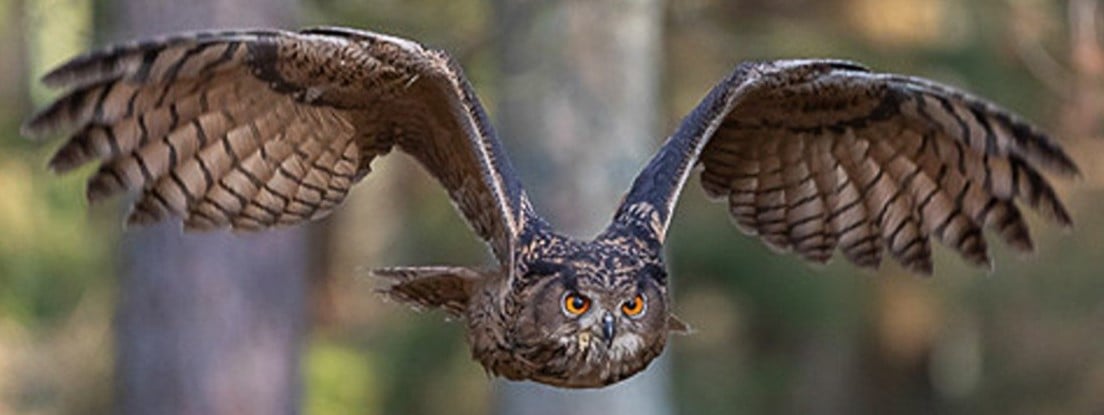In Owl of the Year, I discussed the Barn Owl being one of the most well studied of all owls. That doesn't mean we've come anywhere close to understanding all their secrets. I can't across this interesting article, and it explorers done theories about why the Barn Owl, which hunts at night, is bright white instead of a dark color like most owls.
From AccuWeather
An owl’s ‘shocking’ color should hinder hunting. Scientists may have figured out why it works.
By Katie Hunt, CNN
17 DEC 2024
(CNN) — Flying slowly and silently through the night sky, barn owls are majestic nocturnal hunters that successfully prey on rodents scurrying along the ground below.
Scientists have long puzzled over a feature that would appear to handicap the bird during its midnight hunts. The plumage on its underbelly and wings is gleaming white, an unusual trait that in theory should make it more difficult for the owl to approach its prey undetected.
Unlike the snowy owl, the barn owl lives at latitudes where it doesn’t regularly snow. The barn owl’s paradoxically bright plumage baffled biologist Juanjo Negro and his colleagues, who thought the intriguing biological phenomenon warranted further investigation.
“We started from the intuitive feeling that the outstanding whiteness of the barn owl is so shocking that it should imply some adaptive advantage,” said Negro, a research professor at Doñana Biological Station–Spanish National Research Council in Seville, Spain, via email.
Previous research from September 2019 had suggested that bright white coloration was essentially a form of shock and awe, exploiting rodents’ aversion to bright light. Making the predator more visible to the rodent prey, which freeze in fear, the owls’ whiteness made voles easier to kill, the prior study found.
Negro and his team’s latest research suggests instead that the barn owl’s brilliant white plumage is in fact a form of nocturnal camouflage or counter-illumination that gives the hunter an element of surprise.
Barn owl’s feathers match the moonlight The bird’s white reflective underside effectively mimics moonlight, according to the new study describing the team’s findings that published in the journal PNAS on Monday. The bright plumage allows its silhouette to blend into the nocturnal sky and makes it harder for mice or other rodents to spot the owl.
“When the moon is visible, the sky has some brightness that varies depending on the observing direction. Under these conditions, a dark bird would be seen by its potential prey as a black silhouette against the sky,” said Negro, the study’s lead author. “But, if the ventral part of the bird is reflective enough, in other words if it is ‘white’ enough, it would reflect a good part of the moon.”
According to the researchers’ calculations, the contrast between the reflective, white undersides of barn owls and wide areas of the illuminated night sky falls below the detection threshold of rodent visual acuity, allowing barn owls to approach prey to within a few meters from a broad range of directions without being detected.
“This explanation has not been proposed before to justify the whiteness of barn owls,” Negro added.
A similar phenomenon exists in the ocean, where fish often have light-colored undersides to match sunlit water and make them less visible to predators hovering in the depths below.
Not all barn owls have white underbellies, however; some have reddish-brown plumage instead.
Negro said the research did not investigate hunting success in relation to plumage color, but earlier research had suggested that whiter barn owls were more efficient hunters than their darker counterparts during a full moon.
Bright-white shock value vs. concealment Barn owl expert Alexandre Roulin, a professor of biology at the University of Lausanne’s department of ecology and evolution who conducted the prior research that suggested the species’ white coloration shocked and immobilized its prey, said he was not fully convinced by the new explanation. However, he said he couldn’t rule it out.
“We do not wish to dismiss the authors’ hypothesis outright. It may, in fact, be complementary to our own. Perhaps at long distances the white plumage aids in camouflage, while at closer range, it may serve to make the owl more visible,” he said via email.
One key aspect Roulin said needed further explanation was the behavior of voles under moonlight.
“We observed that voles remained immobile longer when the approaching owl was white rather than reddish. Previous research has shown that this immobilization is an anti-predator response,” Roulin said. “Based on this, we would argue that the voles recognized the white owl as a predator, suggesting that the owl was visible, rather than camouflaged.”
Negro said the owl’s ability to fly in complete silence, a trait that helps it approach prey in stealth, does not tally with the idea that the predator would want to make itself more visible. However, he agreed that the new hypothesis doesn’t totally disprove the previous theory.
Camouflage is often considered a daytime phenomenon based on light and shade. Negro said that there are likely other forms of animal coloration that served as nighttime camouflage, which has not been as well studied as daytime concealment tactics.
“Nocturnal ecology is an emerging field, and considering that half the animals in the planet are essentially nocturnal, adaptations to the natural cycles of the Moon are surely widespread,” he said.


I figured the one was staged, but I didn't notice that, that's funny! 😀
I'm surprised with them being a widespread species I don't seem to encounter them that much in all the places I go to see them...
I used to have one in my field. It would fly back and forth each evening scanning for prey. White and silent... until they started hooting and mating.
If only it were a hoot! I'm sure that was a lovely voice to hear a lot of. 😁